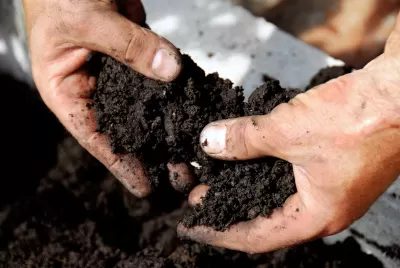Structure
The way in which soil particles hang together determines the structure of the soil. Soil particles that stick together form aggregates and the arrangement of these aggregates determines the pore volume of the soil. This is important to the ratio between soil, air and water. A good soil structure is important to soil life, root growth (related to the penetration resistance), bearing capacity and water regulation.
The most important minerals that are responsible for these processes are calcium and magnesium. If these two minerals are in balance, and this balance differs for every soil type, you obtain the right structure, which can also be observed in the crumbliness.
The crumbliness notes the ease with which the top soil crumbles, the width of the moisture area within which this is possible. The bond between the soil particles determines the crumbliness of the soil. If soils are claylike or dry, the crumbliness can be so poor that the soil resembles concrete. If the soil is wet it can become so plastic that it starts to smear. Crumbly soil is easy to cultivate, as there are no problems with hard clods or smeary, sticky soil.
A solution for problems with crumbliness always comes down to a proper soil analysis that represents the ratios between calcium, magnesium and potassium and sodium in the correct way. Restoring this balance is most certainly possible and can produce the correct structure and crumbliness.


